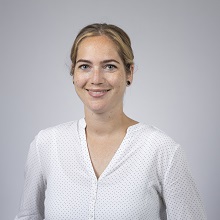Home » Services » Analytics » Material & Synthetics » Emission from plastic materials
We offer various analytical methods for emission from plastic materials.
In other words, we have established and normative procedures to support you in determining emissions from plastic materials.
For you this means, that we offer you a comprehensive portfolio, but we are also happy to support you with individual solutions.
How can we support you?
Our techniques:
We can offer you the analyses under research conditions / ISO 9001 or DIN EN ISO/IEC 17025 conditions.
Materials and products such as plastics, foams, paints, lacquers and pigments can release undesirable and sometimes disturbing chemical compounds under a wide range of conditions during use or processing.
VDA 275
Determination of the formaldehyde release.
CURRENTA Analytics uses a modified method based on the bottle method of VDA 275.
In the test, test specimens of a certain mass and dimension are fixed over distilled water in a closed bottle and stored at a constant temperature for a defined time. Subsequently, the emitted formaldehyde in the water is quantified by means of suitable analytical procedures (e.g. quantitative LC-MS). The amount of formaldehyde determined is related to the amount of sample used (mg/kg).
In addition to formaldehyde, the emission determination of other aldehydes is also possible.
We offer matrix-specific validation and subsequent measurement of your products according to DIN EN ISO/IEC specifications. We quantify in the trace range:
Substances:
VDA 277
Bestimmung der Emission organischer Verbindungen
Determination of the emission of organic compounds
In VDA 277, non-metallic automotive materials are analysed regarding their total carbon emission. Using headspace GC, the crushed sample is stored in a sealed gas volume and then analysed using gas chromatography. The emission is determined in µg of carbon per gram of sample.
In contrast to VDA 278, VDA 277 does not identify the individual VOCs by means of mass spectrometric detection. Only one sum parameter is determined by means of GC-FID.
VDA 278
Thermodesorption analysis of organic emissions for the characterisation of non-metallic automotive materials.
The analytical method is used to determine emissions from non-metallic materials used for moulded parts in motor vehicles. For this purpose, two semi-quantitative sum values are determined, which allow an estimation of the emission of volatile organic compounds (VOC value) and the proportion of condensable substances (fog value). During the analysis, the samples are thermally extracted, the emissions are separated by gas chromatography and detected by mass spectrometry. In contrast to VDA 277, an identification of the individual volatile components as well as a semi-quantitative determination is carried out.
The thermodesorption GCMS (VDA 278 or in modified form) is frequently used by us to clarify damage to plastic parts. It is a very sensitive measuring method and allows the detection of the smallest impurities.
CURRENTA Analytics helps you to identify these chemical compounds. A wide variety of conditions can be simulated using different analytical systems to determine volatile organic compounds (VOCs). These include thermal desorption and headspace coupled with a mass spectrometer. CURRENTA Analytics also offers emission analyses according to VDA (German Association of the Automotive Industry).
Do you have analytical needs? – Fee free to contact us!


